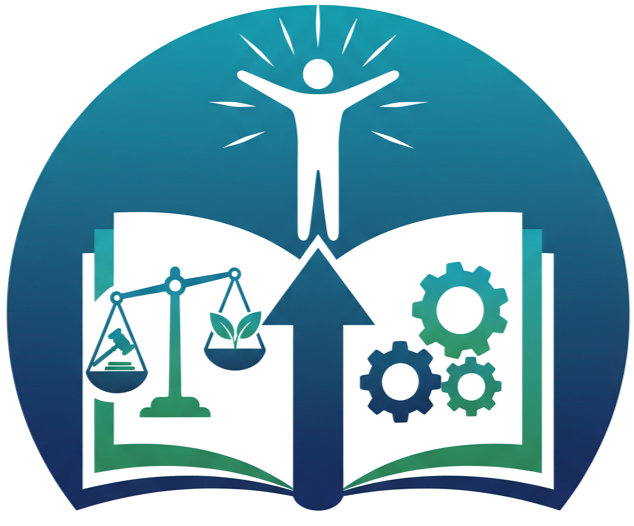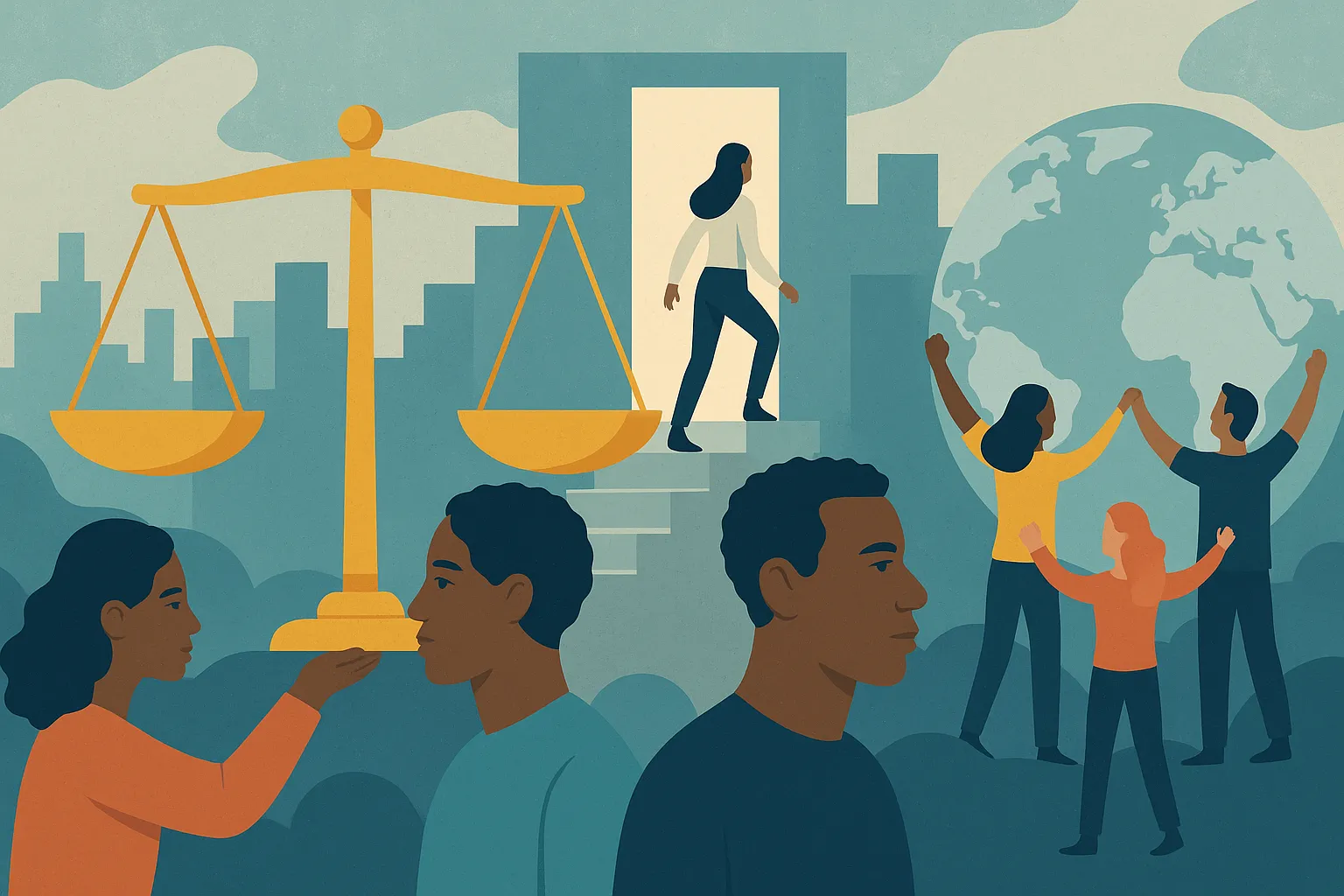The Foundation of Public Confidence
Trust is the cornerstone of any justice system, and transparency is the foundation upon which that trust is built. Without openness, even the most sophisticated institutions risk losing legitimacy in the eyes of the people they serve. Citizens must believe that those in power — whether in government, law enforcement, or public administration — act honestly, fairly, and with accountability. Yet, this belief cannot be sustained through promises alone; it requires consistent proof of integrity through visible oversight and public access to information.
In modern democracies, the concept of transparency goes far beyond releasing reports or publishing statistics. It encompasses a broader culture of openness — one where institutions welcome scrutiny, share their decision-making processes, and acknowledge their mistakes. When public authorities operate in this way, they not only reduce the risk of corruption or abuse but also strengthen the bond between citizens and the state.
Oversight mechanisms, including independent commissions, ombudspersons, and public inquiries, serve as the primary instruments for ensuring transparency in practice. They act as impartial observers, holding institutions accountable when internal systems fail. Together, transparency and oversight create a dynamic balance — a system of checks and balances that ensures justice remains fair and credible.
Why Trust Matters in Justice
Justice systems depend on voluntary cooperation. People must be willing to obey laws, report crimes, and serve as witnesses or jurors. This cooperation is built on trust — the trust that the system will treat everyone equally and that wrongdoing will be addressed without bias. When trust erodes, compliance weakens, and the system begins to fracture.
Public mistrust can stem from several causes: discrimination, lack of accountability, secrecy, or repeated failures to deliver justice. Each instance of misconduct or concealment chips away at confidence, and once trust is lost, it is extremely difficult to rebuild. Transparency serves as the bridge back to credibility. When institutions openly explain their actions, admit to mistakes, and show how they intend to correct them, they begin to rebuild the moral foundation of justice.
Trust is also emotional — it is not only about facts but about perception. People must feel that justice is fair, not only know that it is. This emotional connection is created through visibility, sincerity, and a genuine willingness to listen. In this sense, transparency becomes not just an administrative duty but a human obligation.
The Power of Oversight
Oversight is the practical manifestation of transparency. It is the system’s way of proving that no one is above the law — not even the institutions that enforce it. Independent oversight bodies ensure that complaints are investigated objectively, that evidence is preserved, and that accountability does not depend on political convenience.
One of the most effective forms of oversight is the independent commission of inquiry. When serious incidents occur — deaths in custody, misuse of power, or large-scale institutional failures — these commissions investigate openly and report publicly. Their strength lies in independence: they are not controlled by the very systems they are examining. This independence is vital for restoring public confidence after scandal or injustice.
Other oversight tools, such as parliamentary committees, ombuds offices, and freedom of information laws, complement this process. They create multiple layers of accountability so that power cannot concentrate unchecked in any one branch of government. When these mechanisms function properly, they prevent corruption before it begins and foster a culture where honesty is expected, not exceptional.
Transparency in the Digital Age
The modern world has changed the way people expect transparency. Citizens no longer rely solely on official reports or press conferences; they demand real-time information and open data. Social media, online archives, and live-streamed hearings have made government operations more visible than ever. This shift has increased expectations for honesty and accessibility — but it has also exposed new challenges.
Digital transparency can be a double-edged sword. On one hand, it allows for unprecedented openness; on the other, it can lead to information overload, misinformation, or selective presentation of facts. The goal, therefore, is not only to share data but to communicate truth effectively. Oversight bodies must adapt by using technology responsibly — providing accurate, clear, and contextual information that helps citizens understand complex issues without manipulation.
Moreover, transparency in the digital age means more than uploading documents. It involves genuine dialogue. Institutions that use technology to listen — through consultations, feedback forums, or citizen panels — build stronger relationships with the public. They move from one-way communication to collaboration, transforming transparency into partnership.
Learning from Institutional Failures
Every major inquiry or oversight investigation begins with failure — an event that revealed weaknesses in oversight, communication, or ethics. These failures, while painful, offer some of the most valuable lessons for building trust.
Consider cases where justice systems have been accused of protecting their own members instead of protecting citizens. Such situations erode faith not only in one institution but in the entire structure of governance. When oversight is absent or weak, misconduct flourishes in silence. Transparency acts as sunlight, illuminating areas where accountability has been lost.
The lesson from such failures is clear: trust cannot be restored through secrecy. True reform begins with acknowledgement — a public admission of what went wrong, why it happened, and what will be done differently. When institutions demonstrate humility, they show strength, not weakness. This honesty humanizes them and invites the public to participate in rebuilding what was broken.
Building a Culture of Accountability
Oversight should not be viewed as a punishment but as a safeguard. A healthy organization welcomes oversight because it understands that criticism, when constructive, leads to improvement. Creating this mindset requires cultural change — a shift from defensiveness to openness.
Leaders play a crucial role in shaping this culture. When those in positions of authority model transparency — by publishing decisions, disclosing potential conflicts of interest, and inviting independent review — they set the tone for the entire organization. Accountability becomes part of the institution’s identity, not an imposed obligation.
Moreover, accountability must be continuous, not reactive. Too often, transparency increases only after a scandal has already occurred. The goal should be proactive transparency — consistent reporting, clear communication, and regular audits that identify problems before they escalate. When oversight is built into everyday operations, crises become less likely, and public trust grows naturally.
The Human Element of Transparency
Transparency and oversight are often discussed in legal or administrative terms, but at their core, they are deeply human. They involve listening, empathy, and moral courage. When people come forward with complaints or concerns, they risk personal or professional repercussions. Institutions that value transparency protect these voices rather than silence them.
Whistleblower protections, for example, are a key part of a transparent system. They encourage individuals to report wrongdoing without fear of retaliation. Similarly, public consultations allow communities to express opinions on decisions that affect them. These mechanisms create emotional investment and shared responsibility — essential ingredients for lasting trust.
Transparency also restores dignity to those who have suffered from institutional injustice. When their stories are heard publicly, they are no longer invisible. Oversight turns private pain into collective awareness, ensuring that lessons are not forgotten.
Global Examples of Oversight in Action
Across the world, successful oversight systems have demonstrated how transparency strengthens democracy. Independent anti-corruption commissions in countries like New Zealand and Denmark have maintained high levels of public trust through consistent openness and ethical leadership. Similarly, public inquiries in Canada and the United Kingdom have shown how transparency can transform grief and outrage into meaningful reform.
The common thread among these examples is consistency. Transparency cannot be an occasional performance; it must be a daily practice. Oversight must be empowered, resourced, and independent to maintain credibility. When these principles are respected, the relationship between government and citizens becomes a partnership grounded in trust rather than suspicion.
Turning Transparency into Action
Transparency, no matter how well-intentioned, loses its value if it does not lead to action. Open reports, televised hearings, and public statements may build awareness, but without concrete follow-up, they risk becoming symbolic gestures rather than instruments of progress. The ultimate goal of transparency is transformation — the ability of an institution to recognize its failures and correct them through visible reform.
To achieve this, institutions must move beyond disclosure toward responsibility. Publishing information is only the first step; acting on it is what sustains trust. This means addressing the issues uncovered through oversight: changing flawed policies, disciplining misconduct, compensating victims, and preventing recurrence. When citizens see that transparency leads to measurable outcomes, they begin to believe once again that their institutions are not only watching themselves but improving themselves.
However, genuine reform often requires courage. Admitting fault in public is uncomfortable, and implementing change may disrupt established hierarchies. Yet, without this discomfort, growth is impossible. Transparency without action breeds cynicism; transparency followed by reform builds resilience.
Independent Oversight as a Catalyst for Reform
The independence of oversight bodies is what allows transparency to have real impact. When investigations are conducted by neutral, external authorities, their findings carry moral weight. The public can trust that the conclusions are based on evidence rather than institutional self-protection.
Effective oversight requires both authority and autonomy. Oversight agencies must have the legal power to demand documents, question officials under oath, and make recommendations without interference. Equally important is the freedom to communicate directly with the public. When oversight institutions publish their findings independently, without political editing or approval, they embody the principle of accountability in its purest form.
Many democracies have strengthened this principle by giving oversight bodies constitutional status or legislative protection. Such measures ensure that transparency is not a favor granted by the government, but a right guaranteed to citizens. The result is a governance system where truth can surface even when it is inconvenient — and where public trust is preserved through evidence, not promises.
From Oversight to Continuous Improvement
True oversight does not end with a single investigation. It is a continuous process that demands constant evaluation and self-correction. Institutions should view oversight reports not as attacks but as blueprints for improvement. When organizations respond constructively — implementing recommendations, reviewing internal practices, and monitoring progress — they transform oversight into partnership.
Continuous oversight also means tracking reform after an inquiry concludes. Too often, the energy that follows a major investigation fades as time passes. To prevent this, regular progress updates should be required, showing what changes have been made and how effective they have been. Annual public reviews, accessible data dashboards, and open forums with affected communities can all help sustain momentum.
In essence, oversight should evolve from a reactive measure into a proactive culture — one where accountability is embedded in everyday decision-making rather than triggered only by crisis. This shift turns transparency into a living process, keeping institutions honest and adaptable long after headlines fade.
The Role of Leadership in Sustaining Trust
Leadership defines whether transparency becomes transformative or performative. When leaders genuinely believe in openness, they foster trust not through image-management but through example. A leader who admits errors, welcomes criticism, and supports independent oversight sends a clear message: integrity is valued more than control.
This kind of leadership reshapes entire institutions. Staff members learn that honesty is rewarded, not punished, and that reporting wrongdoing is an act of loyalty, not betrayal. Over time, this creates a self-correcting organization — one that recognizes oversight as a strength rather than a threat.
In contrast, leaders who resist scrutiny, conceal information, or attack critics may temporarily protect their reputation but inevitably destroy credibility. Modern societies are increasingly intolerant of secrecy and deception. In the digital era, information eventually surfaces. Transparency embraced voluntarily earns respect; transparency forced by exposure earns distrust.
Therefore, the most sustainable form of oversight begins at the top, with leaders who practice accountability before they are compelled to.
Empowering Citizens Through Openness
Transparency is not only about how institutions behave; it is also about how citizens engage. When people have access to information, they gain the power to question, challenge, and participate in governance. This shared ownership is what turns oversight into democracy in action.
Public access to data, hearings, and reports encourages active citizenship. Communities can use information to advocate for reform, track progress, and ensure that leaders honor their commitments. Freedom of information laws, citizen review boards, and participatory budgeting initiatives are all examples of how transparency empowers the public to act as co-guardians of accountability.
Moreover, open communication nurtures empathy and understanding. When citizens see the challenges faced by institutions — such as resource shortages, policy constraints, or human error — they are more likely to support constructive solutions rather than assume malice. Transparency thus transforms suspicion into dialogue, replacing anger with informed engagement.
In societies where citizens are empowered by information, oversight becomes a collective effort rather than a bureaucratic function. Trust is no longer demanded; it is earned, sustained, and shared.
Technology’s Expanding Role in Oversight
The digital revolution has given oversight a new dimension. Data analysis, artificial intelligence, and digital monitoring systems now make it possible to detect irregularities faster and with greater precision. Online reporting platforms allow citizens to submit complaints anonymously, protecting whistleblowers and expanding participation.
Yet, as technology enhances transparency, it also introduces risks. Digital oversight must be balanced with privacy protections and cybersecurity safeguards. Misuse of data or surveillance can erode trust as quickly as secrecy once did. Therefore, ethical standards must evolve alongside technological capability. Oversight systems should be transparent not only in their findings but in their methods — explaining how data is collected, analyzed, and stored.
The most progressive institutions are already adopting “open data with integrity” models, where transparency and privacy coexist. These systems ensure that technology serves people, not the other way around, reinforcing the human values that underpin public trust.
Restoring Faith After Scandal
Rebuilding trust after a major failure is one of the hardest tasks for any public institution. Scandal breeds cynicism, and cynicism feeds disengagement. However, history shows that honest transparency and thorough oversight can restore even the most damaged reputations.
The key lies in acknowledgment and consistency. When institutions admit wrongdoing openly and follow through with visible reform, they demonstrate authenticity. Apologies matter, but actions matter more. Implementing oversight recommendations quickly and visibly shows that lessons have been learned.
Furthermore, engaging directly with affected communities can accelerate healing. Public forums, community partnerships, and ongoing dialogue allow citizens to witness progress firsthand. Transparency, when combined with humility and perseverance, can turn a crisis into an opportunity for renewal. What begins as a moment of disgrace can evolve into a model of integrity — a reminder that accountability, though painful, is the highest form of respect for the public.
Global Accountability in an Interconnected World
In the twenty-first century, oversight extends beyond national borders. International cooperation in transparency — from anti-corruption frameworks to human-rights monitoring — ensures that accountability is not limited by geography. When countries share data, best practices, and lessons learned from inquiries, they collectively strengthen global standards for integrity.
Multinational organizations like the United Nations and Transparency International have helped shape these efforts by promoting open-government initiatives and global justice benchmarks. This interconnected approach underscores an important truth: trust in one nation’s institutions influences confidence in others. A transparent world is a safer, fairer one.
As global citizens, we now expect accountability not only from our own governments but from corporations, NGOs, and international bodies as well. Transparency and oversight have become universal languages of legitimacy, transcending borders and uniting people under the shared belief that justice must be seen to be done everywhere.
The Ongoing Evolution of Trust
Trust is not a static condition; it evolves with each generation. Today’s citizens are more informed, more skeptical, and more connected than ever before. They expect institutions to act not just with honesty but with clarity, empathy, and openness. Oversight mechanisms must evolve accordingly — becoming more interactive, more inclusive, and more responsive to the public’s voice.
Transparency, once a reactive measure, is now a fundamental expectation. Citizens no longer accept secrecy as necessary or inevitable. Instead, they demand systems that default to openness and justify confidentiality only when absolutely essential. This cultural shift marks the future of governance — one where the line between the overseer and the governed becomes a partnership rooted in shared responsibility.
As institutions continue to evolve, so too must their understanding of trust. It is not won through perfection but through accountability. When people see their leaders acknowledge imperfection and commit to improvement, they are reminded that transparency is not a weakness — it is a sign of maturity.
Conclusion
Transparency and oversight are not mere bureaucratic requirements; they are moral commitments that define the integrity of modern governance. They ensure that power remains accountable, that justice remains fair, and that citizens remain engaged.
When institutions turn transparency into tangible action, when oversight evolves into continuous learning, and when leadership embraces accountability as a virtue, trust becomes unshakable. It grows stronger with every challenge, every admission, and every act of reform.
Ultimately, building trust is not about never failing — it is about never hiding. A transparent institution may stumble, but it will always stand again with credibility. And in that resilience lies the essence of modern justice: a system not built on perfection, but on the courage to face the truth, in full view of the people it serves.




